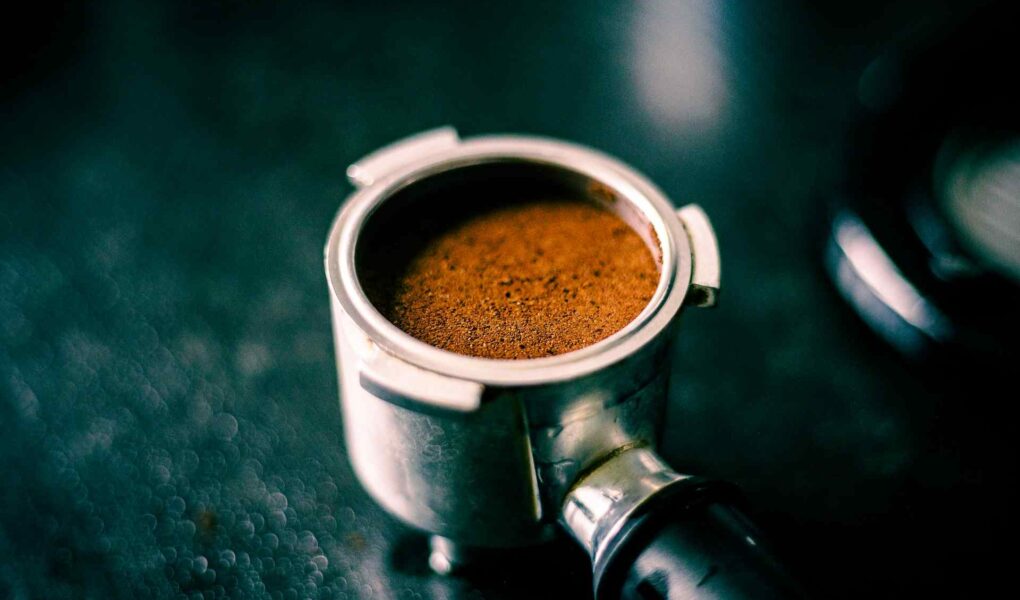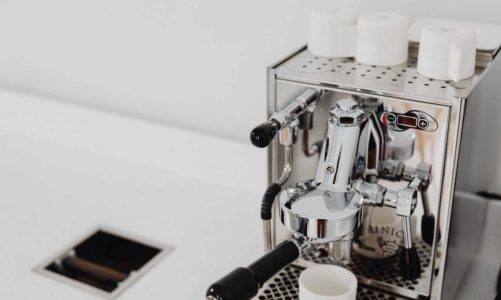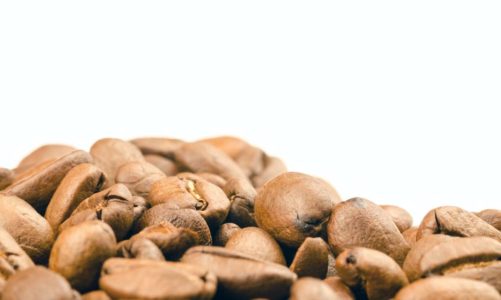Every coffee enthusiast knows that the secret to a perfect cup lies in the details. One detail, often overlooked but crucial, is the even distribution of coffee grounds. An uneven spread can lead to inconsistent extraction, resulting in a cup that’s simultaneously over-extracted (bitter) in some parts and under-extracted (sour) in others. It’s a delicate balance, and achieving it consistently can elevate your coffee experience. So, what is the Weiss Distribution Technique? We are going to cover everything you need to know in this article.
It’s important to note that this is a technique that is applied to making espresso with a portafilter, therefore only relevant for baristas and those with espresso machines at home.
The Basics of Coffee Distribution
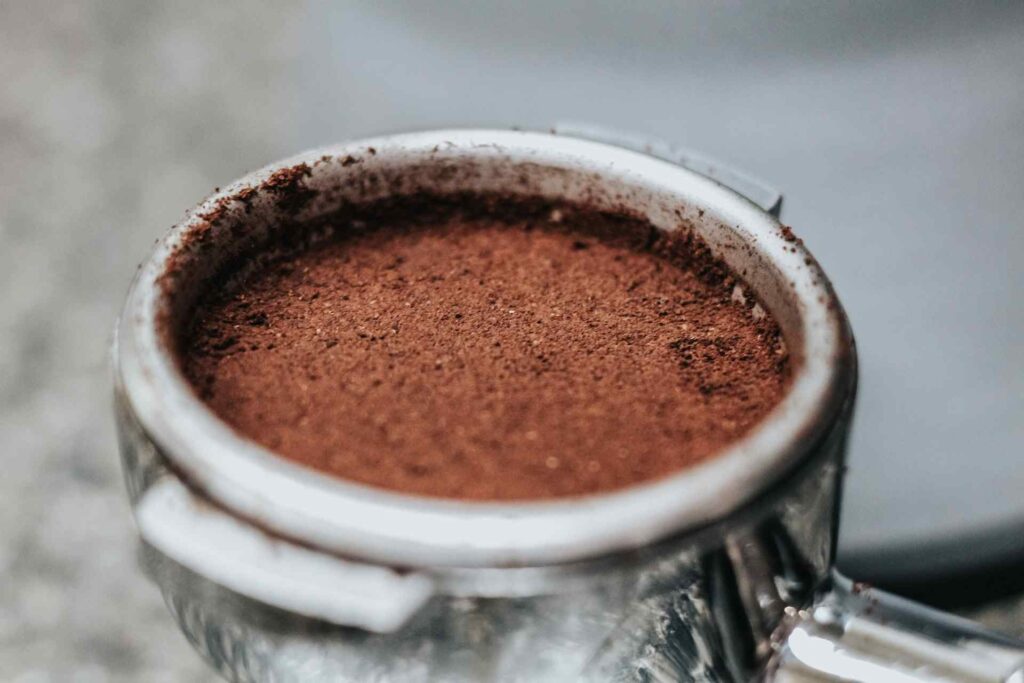
Coffee distribution is an art, a science, and, for many, a ritual for every brewing occasion. It’s the act of ensuring that coffee grounds are spread evenly within the portafilter or brewing vessel. Let’s have a look at the basics of coffee distribution:
Importance of Even Distribution for Consistent Extraction
Uniformity is Key: When water passes through the coffee grounds, it extracts flavors. If the grounds are uneven, water will find the path of least resistance, leading to uneven extraction. Some areas might get too much water, resulting in over-extraction, while others might get too little, leading to under-extraction.
Balanced Flavors: An even distribution ensures that every particle of coffee is exposed to water uniformly. This means each ground contributes to the flavor equally, resulting in a balanced and harmonious cup.
Challenges in Achieving Perfect Distribution
Clumping: One of the most common issues is the formation of clumps in the coffee grounds. These clumps can act as mini barriers, preventing water from flowing evenly.
Channeling: This occurs when water creates small channels in the coffee bed, leading to uneven extraction. It’s often a result of poor distribution or tamping.
Equipment Limitations: Not all grinders produce a consistent grind. Some might produce a mix of fine and coarse particles, making even distribution a challenge.
Human Error: Especially for beginners, the technique of distributing coffee can be tricky. It requires a certain finesse and understanding of how coffee behaves.
For both seasoned baristas and home coffee enthusiasts, achieving the perfect distribution can sometimes seem difficult. However, with the right techniques and a bit of practice, it’s a challenge that can be overcome, paving the way for a consistently delightful coffee experience.
What Is the Weiss Distribution Technique
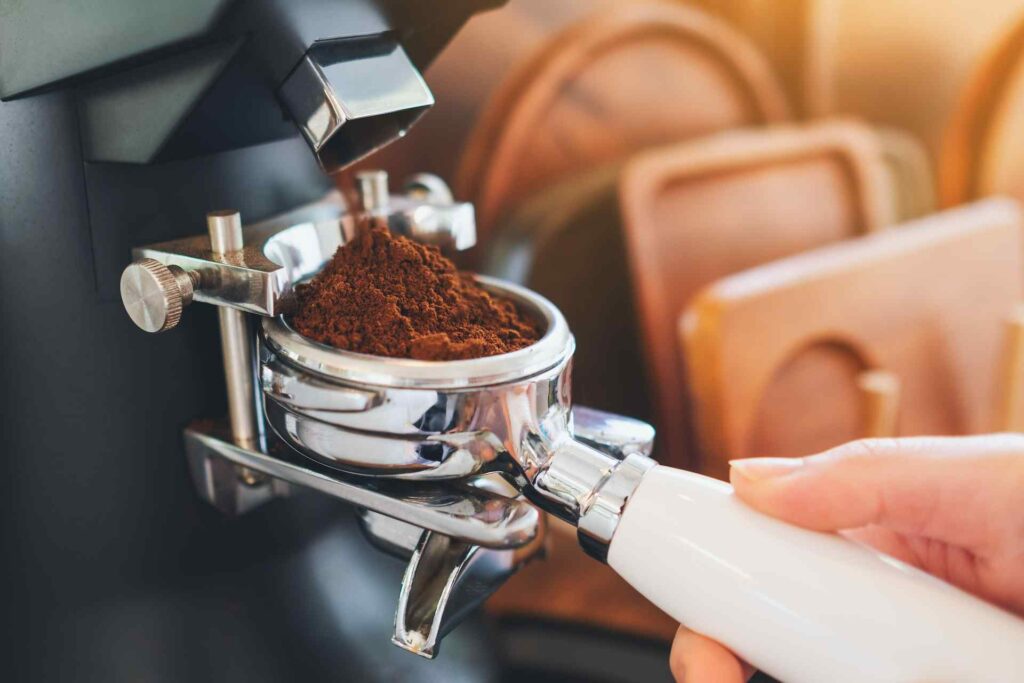
The Weiss Distribution Technique (WDT) is a method introduced by John Weiss to improve the uniformity of coffee grounds distribution in an espresso portafilter. By ensuring an even distribution, WDT aims to minimize channeling during espresso extraction, resulting in a more balanced and consistent shot.
The technique typically involves using a thin tool, like a needle or paperclip, to stir and redistribute the coffee grounds in the portafilter before tamping. This process helps in breaking up clumps and promoting even water flow through the coffee puck, optimizing the flavor extraction from the grounds.
History and Origin of WDT
The technique is named after its creator, a coffee enthusiast and member of the online coffee community, who went by the username “John Weiss”. Recognizing the challenges of achieving an even distribution, especially with grinders that produced clumpy grounds, Weiss introduced a method that was both simple and effective.
The WDT began gaining traction on coffee forums and communities, where members shared their successes and refinements to the technique. Over time, it transitioned from an online tip to a recognized method used by baristas and home brewers.
Basic Principles Behind the Technique
Breaking Clumps: At its core, WDT is about breaking up clumps of coffee grounds. Clumps can act as barriers, preventing even water flow and leading to channeling.
Redistribution: Using a tool, often a needle or a thin wire, the coffee grounds are gently stirred in a circular motion, ensuring an even spread across the portafilter. This gentle agitation ensures that each particle of coffee is evenly spaced.
Consistency: The WDT emphasizes repetition and consistency. By following the same method each time, brewers can achieve a uniform coffee bed, which is crucial for even extraction.
Adaptability: One of the strengths of the WDT is its adaptability. Whether you’re using a high-end grinder or a more budget-friendly option, the technique can be applied to improve distribution.
Implementing the WDT: Step-by-Step Guide
The Weiss Distribution Technique, while rooted in simplicity, requires a methodical approach to ensure its effectiveness. Here’s a comprehensive guide to implementing the WDT in your coffee routine.
Materials Needed:
- Freshly ground coffee.
- A portafilter.
- A needle, thin wire, or a specialized WDT tool (some enthusiasts use a set of straightened paper clips or even acupuncture needles).
- A flat surface or tamping station.
Detailed Steps:
- Prepare the Portafilter: Ensure the portafilter is clean and free from old coffee residues. A clean base is essential for effective distribution.
- Dose the Coffee: Grind your coffee beans and dose the required amount into the portafilter. At this stage, don’t worry about leveling it; just ensure all the coffee is in the portafilter.
- Begin the WDT: Holding your chosen tool (needle, wire, etc.), gently stir the coffee grounds in a circular motion. The idea is to break up any visible clumps and aerate the coffee. Ensure you cover the entire surface of the coffee bed, from the center to the edges.
- Level the Coffee Bed: After stirring, use a flat edge (like a bench scraper or a leveling tool) to level the coffee bed. This ensures an even surface for tamping.
- Tamp the Coffee: Apply even pressure to tamp the coffee. The goal is to have a flat, compressed bed of coffee that’s ready for brewing.
- Inspect and Adjust: Before attaching the portafilter to the espresso machine, give it a quick inspection. Ensure there are no visible clumps or uneven areas. If needed, you can give it a gentle tap to settle any stray grounds.
Tips for Mastering the Technique:
- Gentle Agitation: The key to WDT is gentle agitation. You’re not trying to dig into the coffee but rather to lightly stir and redistribute it.
- Consistency is Key: Like any technique, the more you practice WDT, the better you’ll get. Aim for consistency in your motions and approach.
- Customize Your Tool: While there are specialized WDT tools available, many enthusiasts find success with DIY solutions. Experiment with different tools to find what works best for you.
- Adjust for Different Coffees: Different coffee beans, especially those with varying levels of roast or oiliness, might require slight adjustments in your technique. Pay attention to the results in the cup and adjust as needed.
Benefits of the Weiss Distribution Technique
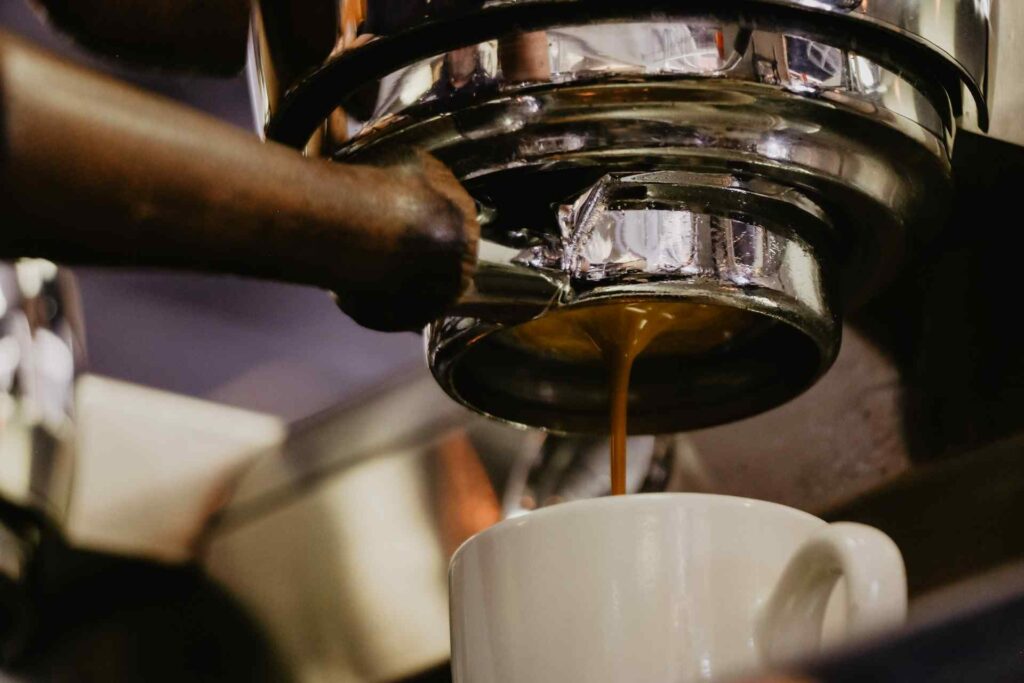
In the realm of coffee brewing, where every detail can influence the final cup, the Weiss Distribution Technique (WDT) has emerged as a game-changer for many enthusiasts and professionals. But what are the tangible benefits of this method? Let’s delve into the advantages of WDT.
Improved Extraction Consistency
Uniform Water Flow: One of the primary benefits of WDT is the promotion of even water flow through the coffee grounds. By eliminating clumps and ensuring an even distribution, water can flow uniformly, ensuring that each coffee particle is extracted equally.
Reduced Channeling: Channeling, where water finds the path of least resistance and flows unevenly, can lead to parts of the coffee bed being over-extracted and others under-extracted. WDT significantly reduces the chances of channeling, leading to a more consistent extraction.
Enhanced Flavor and Aroma
Full Spectrum Extraction: With an even extraction, you’re more likely to achieve a full spectrum of flavors from the coffee beans. This means the delicate balance of acidity, sweetness, bitterness, and body is maintained, leading to a more flavorful cup.
Highlighting Bean Characteristics: For those who love exploring single-origin beans or specific roasts, WDT can help highlight the unique characteristics of the bean. Whether it’s the fruity notes of an Ethiopian bean or the nutty undertones of a Brazilian roast, an even extraction can make these flavors more pronounced.
Elevated Coffee Quality
Consistency Across Brews: One of the challenges many coffee enthusiasts face is achieving consistency across different brews. With WDT, you’re more likely to get a consistent cup every time, enhancing the overall coffee experience.
Optimal Utilization of Beans: Coffee beans, especially specialty ones, can be expensive. An uneven extraction can lead to wastage, as you’re not getting the full potential from the beans. WDT ensures that every bean’s flavor is optimally extracted, leading to better value and enjoyment.
WDT VS Other Distribution Methods

The world of coffee brewing is rich with techniques, each promising the perfect cup. While the Weiss Distribution Technique (WDT) has its merits, it’s essential to understand how it compares to other popular distribution methods. Let’s explore some of these techniques and see how WDT stands out.
Stockfleth’s Method
- Overview: A popular technique among baristas, the Stockfleth’s method involves using the finger to push and distribute the coffee grounds in a circular motion, ensuring an even spread across the portafilter.
- Pros: It’s quick, requires no additional tools, and with practice, can lead to a consistent distribution.
- Cons: It might not break up clumps as effectively as other methods, and there’s a learning curve to mastering the technique.
- How WDT Compares: WDT offers a more detailed approach, focusing on breaking up clumps and ensuring a thorough distribution. While Stockfleth’s method is quicker, WDT might be more effective for grinders that produce clumpier grounds.
Tapping Method
- Overview: This involves tapping the sides of the portafilter to settle and distribute the coffee grounds evenly.
- Pros: It’s straightforward and quick, making it suitable for busy settings.
- Cons: It might not address clumps effectively, and excessive tapping can lead to over-compaction in some areas.
- How WDT Compares: WDT provides a more meticulous approach, ensuring each particle of coffee is evenly spaced. The tapping method is more about settling the grounds, while WDT focuses on distribution and de-clumping.
Leveling Tools
- Overview: These are specialized tools designed to distribute and level the coffee grounds in the portafilter. They often have a flat or serrated base that spins to spread the coffee.
- Pros: They offer consistency and can be very effective in achieving an even coffee bed.
- Cons: They can be expensive, and while they level the grounds, they might not address clumping effectively.
- How WDT Compares: WDT can complement leveling tools. While the tool ensures a flat bed, WDT ensures that the grounds are de-clumped and evenly distributed before leveling.
Shaking Method
- Overview: This involves gently shaking the portafilter side-to-side to distribute the grounds.
- Pros: It’s quick and requires no special tools or skills.
- Cons: It might not be as precise as other methods and might not address all clumps.
- How WDT Compares: WDT offers a more hands-on and detailed approach, ensuring a thorough distribution. The shaking method is more passive and might not achieve the same level of precision.
Each distribution method has its strengths and weaknesses, the Weiss Distribution Technique stands out for its attention to detail and effectiveness in breaking up clumps. It’s a method that can be integrated into various brewing routines, ensuring that the coffee bed is always primed for optimal extraction. Whether used alone or in conjunction with other techniques, WDT offers a pathway to consistently great coffee.
Practical Tips for Beginners
Embarking on the journey of perfecting your coffee brew can be both exciting and daunting. As you consider integrating the Weiss Distribution Technique (WDT) into your routine, here are some practical tips to guide you:
- Start Simple: Begin with the tools you have on hand. While specialized WDT tools are available, a simple needle or straightened paper clip can be just as effective when starting out.
- Consistency is Key: Like any new skill, practice makes perfect. Aim to use the WDT method consistently, noting the differences in your brew each time.
- Document Your Process: Especially in the beginning, jot down notes about your technique, grind size, and the results in the cup. This can help you refine your approach over time.
- Pair with Other Techniques: WDT is versatile. Consider pairing it with other distribution methods, like tapping or leveling tools, to see what combination yields the best results for you.
Troubleshooting Common Issues
- Coffee Grounds Flying Everywhere: If you find that your stirring is causing a mess, try adjusting your technique to be gentler or consider using a tool with a different shape.
- Not Noticing a Difference: If you’re not seeing a significant change in your brew, revisit your stirring technique, ensuring you’re effectively breaking up clumps and evenly distributing the grounds.
The Final Sip
The quest for the perfect cup of coffee is a journey of continuous learning and experimentation. The foundation of a great brew is the even distribution of coffee grounds. The Weiss Distribution Technique offers coffee enthusiasts a method to achieve this foundation consistently.

